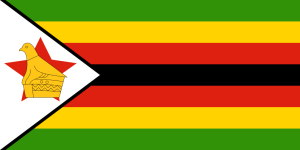By Donna Welles.
Zimbabwe enjoys high literacy rates and a dynamic music and comedy scene. It has colonial roots in the United Kingdom; Cecil Rhodes harvested diamonds there. In modern times, the People’s Republic of China has invested in Zimbabwe’s energy sector. Allow us to examine this South African nation from two perspectives, that of its armed forces and that of its currency.
Fifteen nations in Sub-Saharan Africa employ more than 25,000 Armed Forces Personnel. Zimbabwe is one of three South African nations included in this group. Angola employs 117,000 troops, South Africa employs 77,150 troops, and Zimbabwe employs 50,800 as of 2013. Notably, eight of the fifteen are located in East Africa. This includes two of the top three, Eritrea and South Sudan. Eritrea employs 201,750 troops and South Sudan employs 185,000. Sudan, located in North Africa, has Sub-Saharan Africa’s largest Armed Forces pool at 264,300.
Zimbabwe’s currency today is what has attracted the global media. From 2000-2014, Sub-Saharan nations with the most radical deviation from the $USD are Zimbabwe, Democratic Republic of Congo, Angola, Malawi, and Guinea. Zimbabwe’s inflation rating is inestimable, while the other four are tangible figures. Democratic Republic of Congo has deviated from the $USD by 4,138%, Angola by 879%, Malawi by 673%, and Guinea by 301%.
Nigeria, Africa’s largest nation, deviated from the $USD during the same timeframe by 56%. Nations who utilize the Central African Franc as well as the West African Franc deviated from the $USD by -31%. In the global context, Japan’s Yen deviated from the $USD by -2% while the Euro by -31%.



